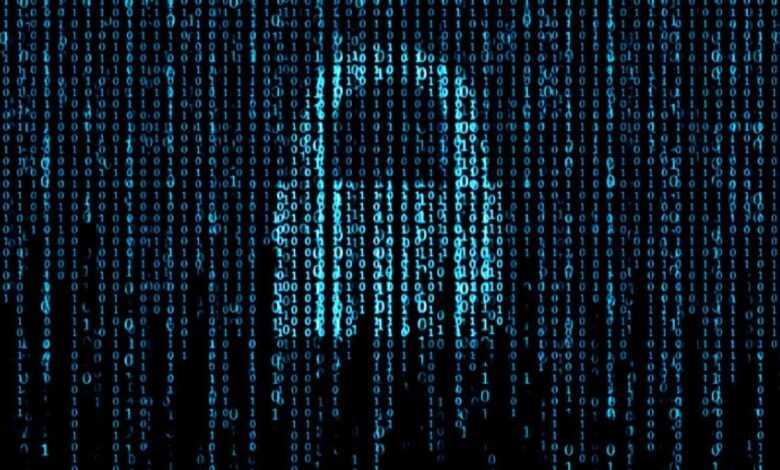Extraneous Files Cybersecurity: Understanding Risks and Strategies for Protection

This article delves into the issue of extraneous files cybersecurity, examining what these files are, how they can create vulnerabilities, and what strategies individuals and businesses can implement to mitigate the risks associated with them. In today’s digital age, cybersecurity is one of the most critical aspects of both personal and organizational safety. One key threat that often flies under the radar is the presence of extraneous files. These are files that may not seem harmful at first glance but can pose significant security risks if not managed properly.
What Are Extraneous Files?
Extraneous files are essentially unnecessary or redundant data that resides on a system but does not serve any active purpose. These can range from temporary files, old software installation files, log files, caches, and even documents that are no longer in use. While they may appear benign, these files can accumulate over time, eating up storage space and creating various security concerns.
These files are often created as by-products of routine operations, such as software installations, browsing the internet, or system updates. Although they are initially generated for legitimate reasons, they tend to linger long after their usefulness has expired. This accumulation of unused data can turn a secure system into a vulnerable one, ripe for exploitation by cybercriminals.
Why Are Extraneous Files a Cybersecurity Concern?
Extraneous files can seem like harmless clutter, but they can actually present several cybersecurity risks. Below are some of the most significant concerns related to extraneous files cybersecurity:
1. Increased Attack Surface
Every file on a system, whether actively in use or not, represents a potential point of vulnerability. Hackers can exploit flaws in outdated or unnecessary files to gain unauthorized access to a system. This increased attack surface makes it easier for cybercriminals to infiltrate a system, steal sensitive data, or plant malicious software.
For example, old installation files for software that is no longer supported may contain unpatched vulnerabilities. If these files are left on a system, they can provide an easy entry point for attackers.
2. Data Leakage
Extraneous files can also contain sensitive information that should have been deleted but was left behind. For instance, log files may store user credentials, financial information, or other confidential data. If these files are not properly secured or disposed of, they can become a treasure trove for hackers looking to steal valuable information.
In the context of a data breach, extraneous files can exacerbate the situation by providing additional information that cybercriminals can exploit. Thus, managing these files is crucial to prevent unintended data leakage.
3. Performance Degradation
Although performance degradation may not seem like a direct cybersecurity issue, it can lead to vulnerabilities. When a system is bogged down by large amounts of extraneous files, it may become sluggish, causing delays in updates, security patches, and system monitoring. These delays can create gaps in security, giving hackers more time to exploit known vulnerabilities.
Moreover, system administrators may overlook critical maintenance tasks due to the overall slow performance of the system, further increasing the risk of a security breach.
4. Obfuscation of Malicious Activity
Extraneous files can also serve as a convenient cover for malicious activities. Cybercriminals often hide malware or other harmful programs within a system’s clutter of unnecessary files, making it harder for security professionals to detect them. This obfuscation can allow the malware to remain active for extended periods, potentially causing more damage over time.
In some cases, cyber attackers might even create extraneous files themselves to serve as distractions or decoys, making it more difficult for cybersecurity teams to identify the actual threat.
The Role of Extraneous Files in Ransomware Attacks
Ransomware is one of the most devastating forms of cybercrime today, and extraneous files can play a significant role in facilitating these attacks. Ransomware typically spreads by exploiting vulnerabilities in a system, and extraneous files can provide an easy entry point. Additionally, some ransomware programs are designed to encrypt all available data, including extraneous files, making it more difficult to recover from an attack.
One of the key challenges in preventing ransomware attacks is maintaining a clean and organized file system. By regularly eliminating extraneous files, businesses and individuals can reduce the potential attack surface and make it harder for ransomware to spread.
Strategies for Mitigating the Risks of Extraneous Files Cybersecurity
Given the potential risks associated with extraneous files, it is crucial to implement a robust cybersecurity strategy aimed at managing these files effectively. Below are some recommended steps to minimize the risks related to extraneous files cybersecurity:
1. Regular File Audits
Performing regular audits of the files stored on a system is one of the most effective ways to manage extraneous files. These audits can help identify unnecessary files, obsolete software, or outdated installation packages that should be deleted. By routinely assessing the data stored on a system, businesses and individuals can reduce the amount of clutter and minimize their risk of exploitation.
2. Automated Cleanup Tools
Many modern operating systems and cybersecurity tools offer automated cleanup features that can help manage extraneous files. For instance, Windows has a built-in Disk Cleanup tool that can delete temporary files, old installation packages, and other unnecessary data. Similarly, third-party software can be used to automate the cleanup process, ensuring that extraneous files are regularly purged from the system.
3. Data Encryption
For files that need to be retained but contain sensitive information, encryption is a critical defense mechanism. By encrypting important files, businesses and individuals can protect sensitive data even if an attacker gains access to extraneous files. Encryption ensures that even if a file is compromised, its contents remain inaccessible to unauthorized users.
4. Patch Management
Many extraneous files are the result of outdated software that has not been properly maintained. Implementing a patch management strategy ensures that all software is kept up to date with the latest security fixes, reducing the chances that outdated files will be exploited by cybercriminals. Regularly updating software also helps eliminate any unnecessary files that may have been created during earlier installation processes.
5. Endpoint Security Solutions
Deploying comprehensive endpoint security solutions can help detect and remove extraneous files before they become a problem. These solutions typically include antivirus software, firewalls, and intrusion detection systems that can monitor for suspicious activities, including the presence of unnecessary or harmful files. By integrating these tools into an overall cybersecurity strategy, organizations can better protect themselves against the risks posed by extraneous files.
6. Employee Training
In the context of organizational cybersecurity, human error is often the weakest link. Training employees to recognize the importance of managing extraneous files can go a long way in reducing risk. Employees should be educated on best practices for deleting old files, avoiding the installation of unnecessary software, and using secure file storage methods. Additionally, regular training sessions can keep employees up to date on the latest cybersecurity threats and defense strategies.
Conclusion
Extraneous files may seem like an innocuous problem, but in reality, they can create significant cybersecurity risks. From increasing the attack surface to facilitating ransomware attacks, these files can open the door to various forms of cybercrime if not properly managed. However, by implementing regular file audits, using automated cleanup tools, encrypting sensitive data, and employing robust endpoint security solutions, individuals and organizations can mitigate the risks associated with extraneous files cybersecurity.
In an age where data is more valuable than ever, taking proactive steps to manage extraneous files is not just good practice—it’s essential for protecting sensitive information and maintaining a secure digital environment.
you may also read fastblogstime.




